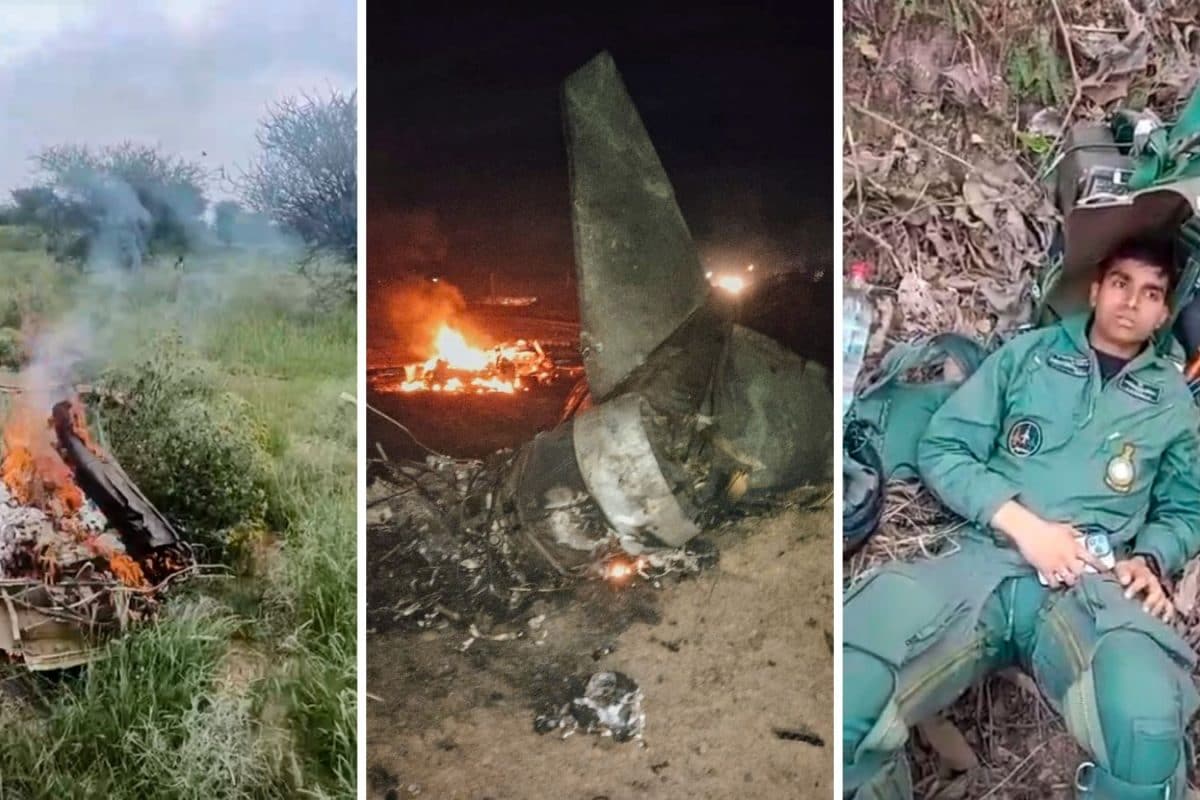

A recent crash involving an Indian Air Force (IAF) Jaguar fighter jet in Rajasthan's Churu district has tragically resulted in the death of both pilots on board. The incident, which occurred on Wednesday, July 9, 2025, marks the third such accident involving a Jaguar aircraft within the last five months, raising concerns about the safety and maintenance of the aging fleet.
The aircraft, a twin-seater trainer version of the Jaguar, was on a routine training mission when it crashed in an agricultural field in Bhanoda village around 1:25 PM. The IAF has confirmed the crash and the fatalities, stating that a court of inquiry has been constituted to ascertain the cause of the accident. No damage to any civilian property has been reported.
Eyewitnesses reported hearing a loud noise followed by flames and smoke rising from the fields. The wreckage of the aircraft was found in a severely damaged condition, with body parts scattered near the crash site.
This latest incident follows two other Jaguar crashes earlier in 2025. In March, a Jaguar crashed in Ambala, Haryana, with the pilot ejecting safely. In April, another Jaguar crashed near Jamnagar Air Force Station in Gujarat, resulting in the death of one pilot.
The SEPECAT Jaguar, known as 'Shamsher' meaning "Sword of Justice" in Persian, is an Anglo-French supersonic attack aircraft that has been a crucial component of the IAF's operational capabilities for many years. The aircraft was designed for deep penetration strike capabilities, with the ability to effectively locate and hit strategically significant targets deep within enemy territory. The IAF inducted the Jaguar in 1979. The first few aircraft were delivered in April 1979. In 1979, a transfer-of-technology agreement was signed with Britain to manufacture Jaguars in India by Hindustan Aeronautics Limited (HAL). The first HAL-assembled Jaguar flew in March 1982 and was known as the DARIN (Display Attack and Ranging Inertial Navigation) version.
As of April 2025, the IAF operates approximately 115 Jaguar aircraft. The single-seat Jaguar IS variant (around 78 jets) forms the backbone of four strike squadrons, while the dual-seat Jaguar IB (27 aircraft) serve as trainers. Additionally, eight Jaguar IMs are dedicated to maritime roles. The Jaguars are fielded across six squadrons: * Four strike squadrons (Nos. 5, 14, 16 & 27) * One maritime squadron (No. 6) * One squadron that mixes combat and training jets (No. 224)
The Jaguar has participated in numerous operations, including the Kargil war in 1999, where it played a significant role in reconnaissance and high-altitude precision targeting. The IAF has also extended the operational life of the Jaguars with mid-life upgrades, including modern EW suites, radar warning receivers (RWRs), smart weapons, and avionics and survivability systems.
Despite these upgrades, the Jaguar fleet is aging, and concerns have been raised about its maintenance and operational safety. The IAF intends to begin phasing out its Jaguar strike aircraft starting in 2027-2028, with a complete phase-out scheduled by 2035-2040.